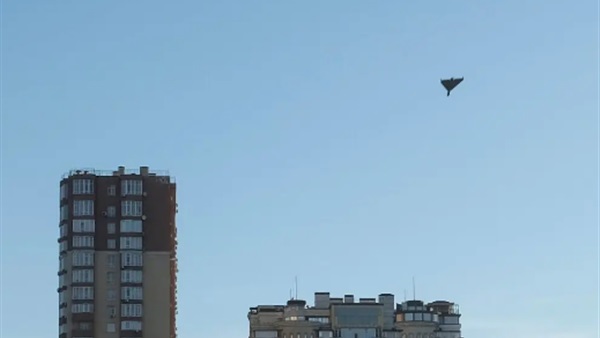Iranian Weapons Built With Western Semiconductors Despite Sanctions

The Iranian drones that Russia has used to attack military targets and civilians in Ukraine are built with parts almost exclusively made by companies with headquarters in the United States, Europe and Asia, according to a report issued Tuesday by a weapons research group.
Most of the parts that the researchers examined, including semiconductors and other advanced electronic components, had markings indicating they were manufactured in recent years while Iran has been under sanctions meant to deprive it of such matériel, the report said. One drone-fired guided missile appeared to have been made as recently as May.
How the parts ended up in Iran is unclear. The markings on components usually identify the company that sold the part but not necessarily the year or the location of manufacture.
Iran has denied supplying Russia with military equipment since the latter invaded Ukraine in February, but the group’s findings undercut that assertion.
The report was published by Conflict Armament Research, an independent group based in Britain that identifies and tracks weapons and ammunition used in wars. A small team of its investigators visited Kyiv, Ukraine’s capital, in early November at the invitation of the Ukrainian security service.
Russia and Ukraine have used many types of drones in the war, including models produced by the United States, China and Turkey. Some are surveillance drones, but larger models can carry missiles and grenades to attack targets on the ground.
The Conflict Armament Research team analyzed the remains of three models of advanced Iranian unmanned aerial vehicles — the Shahed-131 and the Shahed-136, which are designed to crash into their target and explode on impact, and the Mohajer-6, an armed surveillance drone.
“In three U.A.V. models, we saw more than 500 different components,” said Damien Spleeters, who led the group’s investigation. “We identified more than 70 manufacturers in 13 different countries, and about 82 percent of these components were made in the U.S.”
Most of the components that the team was able to identify by year of manufacture were produced in 2020 and 2021, Mr. Spleeters said.
The Iranian drones began arriving in Russia in August, according to U.S. officials. Ukrainian soldiers have said Russian troops have used the Shahed-136 to destroy howitzers supplied by the United States as well as civilian infrastructure like electrical power stations across the country.
In September, the Biden administration announced new sanctions against the Iranian company that makes the Shahed drones after Russian troops attacked civilians with those weapons. Britain and the European Union sanctioned the same company in October.
That so many components in these weapons came from the United States and European Union nations, even with various sanctions against Iran in place, Mr. Spleeters said, points to just how ineffective such actions have been.
“Very often when I speak to regulators, the conversation goes to how difficult it is to regulate those things because they are everywhere,” he said. “But some of the things we found are pretty high-end.”
In addition to finding advanced semiconductors in Iranian weapons, the group also found a large number of common and inexpensive chips used throughout them.
“Many of the chips that end up in military systems like drones also have widespread consumer uses,” said Chris Miller, a professor of international history at Tufts University and the author of the book “Chip War,” which chronicles the development and proliferation of semiconductors. “What that means is that they are available for purchase for consumer or civilian purposes in many countries, and so there’s not close control on where those chips are going when they reach distributors and then end users.”
He added: “So while it would certainly be illegal for a U.S. firm to transfer chips directly to Iran for this type of use, it’s fairly straightforward for those chips to be transferred to a third country, and then someone in the third country to transfer them on to Iran, for example.”
Such chips are small, perhaps cost as little as a dollar each and are often made in batches of tens of thousands, Mr. Miller said, making the diversion of hundreds or thousands of them to a country like Iran fairly easy.
Both Shahed drones are triangular and have gas-burning motors that spin a propeller at their rear. The ones examined in Ukraine had been repainted gray and were marked with the Russian word for geranium, Mr. Spleeters said.
Measurements of the drones were difficult to estimate because they had either been shot down or had malfunctioned and were not fully intact.
By contrast, the Mohajer-6 is a much larger, reusable drone approximately the size of a small ultralight propeller plane. It is believed to have a range of about 125 miles and can be used for surveillance missions as well as airstrikes.
The investigators also had rare access to an Iranian Qaem-5, a small precision-guided munition fired from the Mohajer. Measuring just over four feet in length, the Qaem-5 is slightly smaller than the Hellfire missile commonly fired by armed American drones.
A small television camera in the missile’s nose indicates that the weapon is guided remotely, the investigators said.
The group says that its analysis of Iranian drones seen in the Middle East since 2017 shows that the weapons are increasing in sophistication and capability.
Electronic components in the Shahed drones indicated that those weapons are capable of accurately flying to their targets and contain satellite navigation modules that would allow them to operate in areas where satellite navigation signals have been jammed.
“It seems there’s a big jump in capabilities for the single-use drones,” Mr. Spleeters said. “They’ve been able to add more capabilities and resiliencies to the weapons it exports.”





